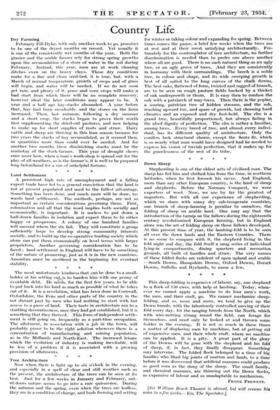Tree Architecture Now when there is light up to sik
o'clock in the evening, and especially in a spell of clear and still weather such as the present, the architecture of the trees can be seen at its best. Just for a few weeks in January and February, out- ef-doors nature seems to go into a rare _quiescence. During the autumn and the spring, even When the trees are leafless, they are in a condition of change, and buds forming and setting
for winter or taking colour-and 'expanding for spring. Between times comes the pause, a brief few weeks when the trees are at rest and at their most Satisfying architecturally. For-
tunately for the contemplator or tree architecture; no further
discrimination is needed than to prefer one above another where all are good. There is no such natural thing as an ugly
tree, or an ugly grove of trees. And they are consistently, in harmony with their surroundings. The beech is a noble tree, in colour and shape, and its wide sweeping growth is best of all suited to the long curves of the chalk downs. The best oaks, flattened of form, twisted and rugged of branch, arc to be seen on rough pasture fields backed by a thicket of oak undergrowth or thorn. It is easy then to confuse the oak with a patriarch of may-trees. Then there is the poplar, a soaring, patrician tree of hidden streams, and the ash, reaching upward too, and spare of growth, but choosing hard climates and an exposed and dry foot-hold. The elm is a grand tree, beautifully proportioned, but always failing in the aloof dignity of perfection. The elm is rather a familiar, among trees. Every breed of tree, and almost every indivi- dual, has its different quality of architecture. Only the conifers lack structural charm, except the Scots fir, which is so nearly what man would have designed had he needed to express his vision of treeish perfection, that it makes up for the gracelessness of the rest of its tribe.
















































 Previous page
Previous page